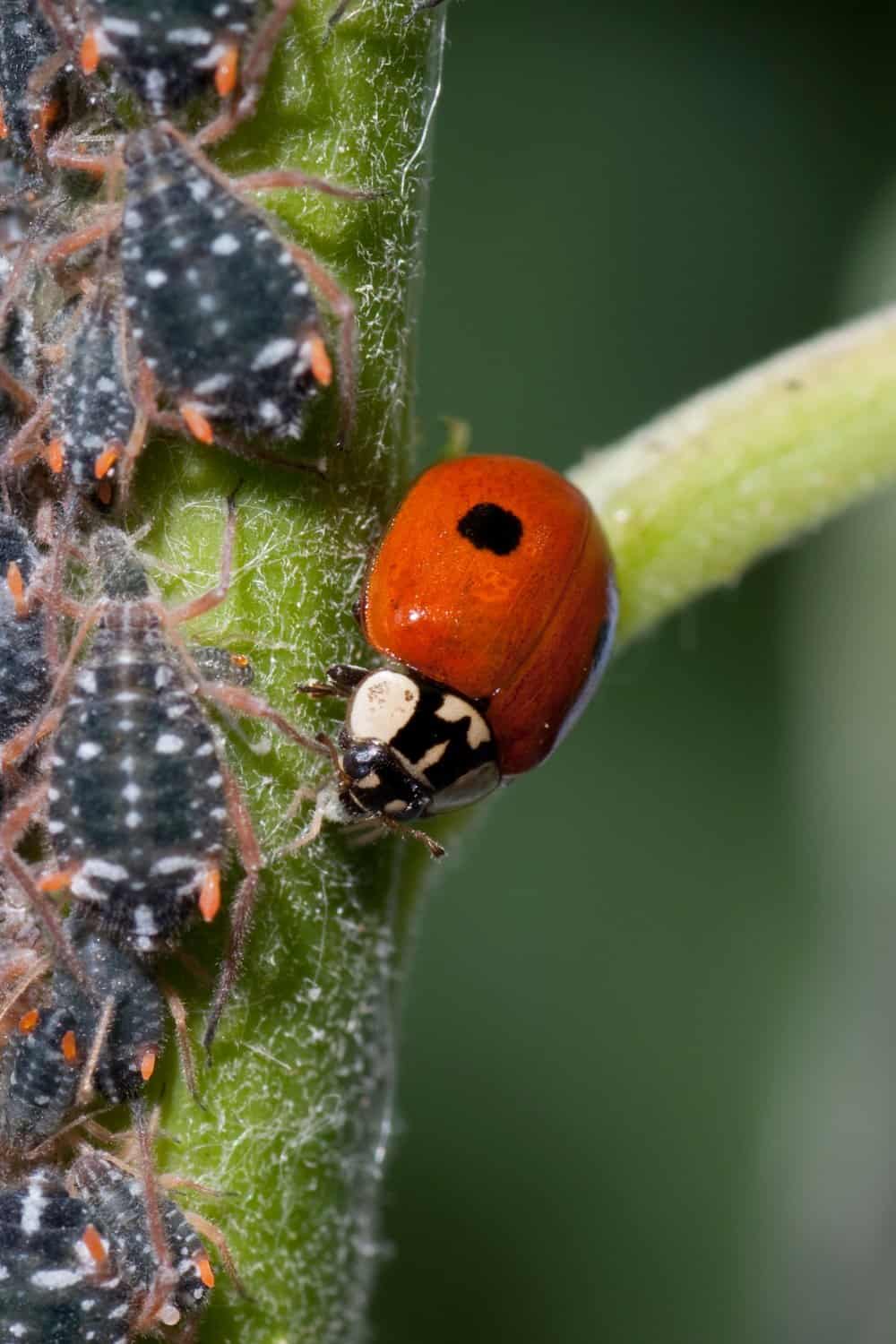Naturally, controlling squash bugs may be one of the biggest challenges for gardeners. In this blog post, I will teach you how to get rid of squash bugs naturally and without chemicals.
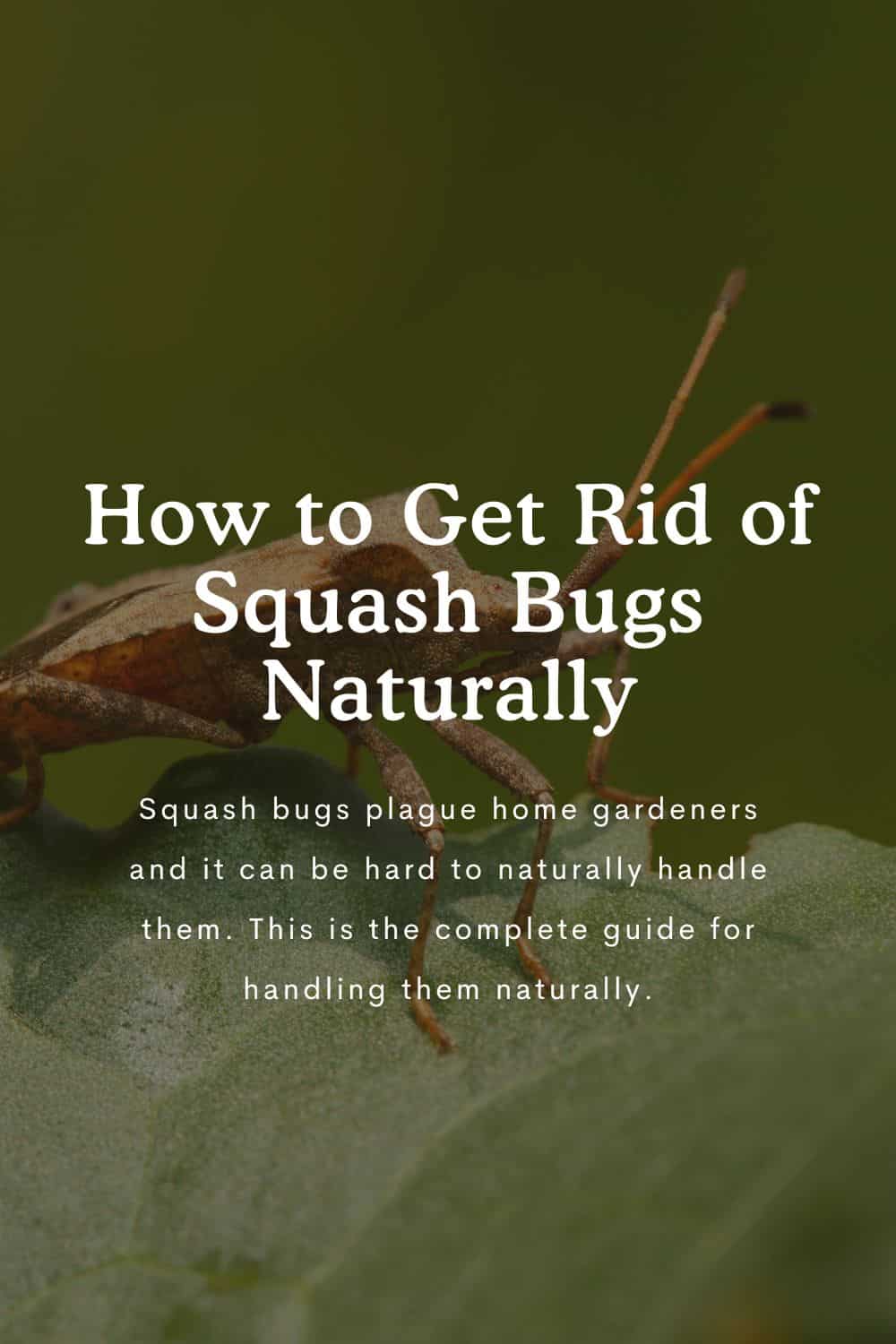
Squash bugs are one of my personal enemies in the garden. Surprisingly I find these pests to be one of the worst and hardest to handle in the garden as a natural gardener. Over the years, as I have watched many pumpkins, zucchini, Hubbard, and other squashes become demolished by these pests, I have learned some key tricks that really make a difference in controlling them.
Squash has a tendency to have quite a few different pests, including aphids. If you are wondering how to handle them, you can read about naturally controlling aphids on your squash plants here.
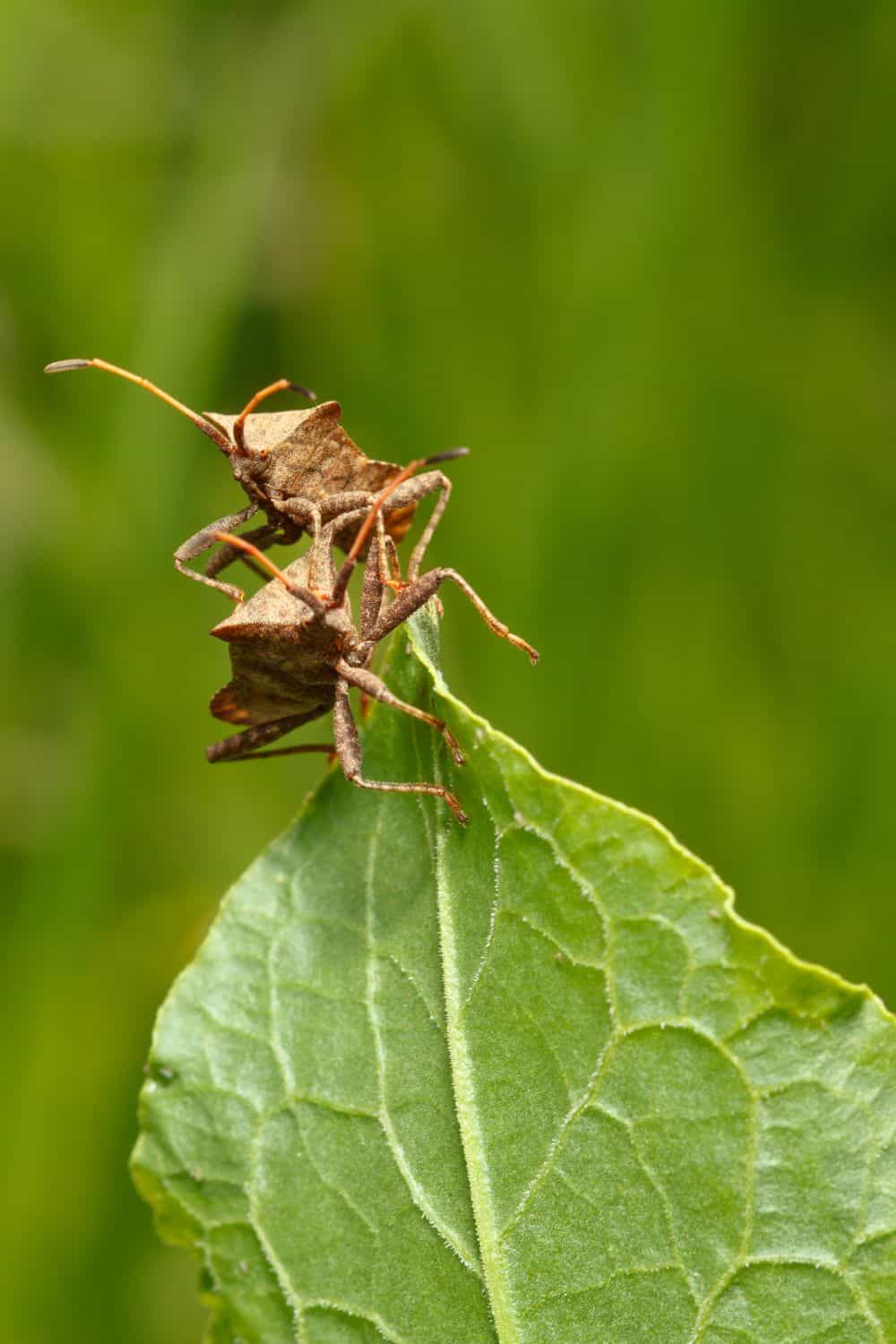
What are squash bugs?
Squash bugs are sometimes a common pest of squash, pumpkin, and other cucurbit plants such as zucchini and cucumbers. They are large, brown insects with orange stripes on their abdomens and omit a foul order whenever they are disturbed. Squash bugs’ main food source is the sap of plants, which can cause wilting, yellowing, and even death. They can smell CO2 and are naturally drawn to actively growing plants. Not only are they destructive to plants through their feeding, but they can also transmit diseases.
Squash bugs fly, and their eggs are nearly impossible to squash, so they have many resiliencies to them. Squash bugs are also more commonly known as stink bugs because of the foul order they omit when they are touched.
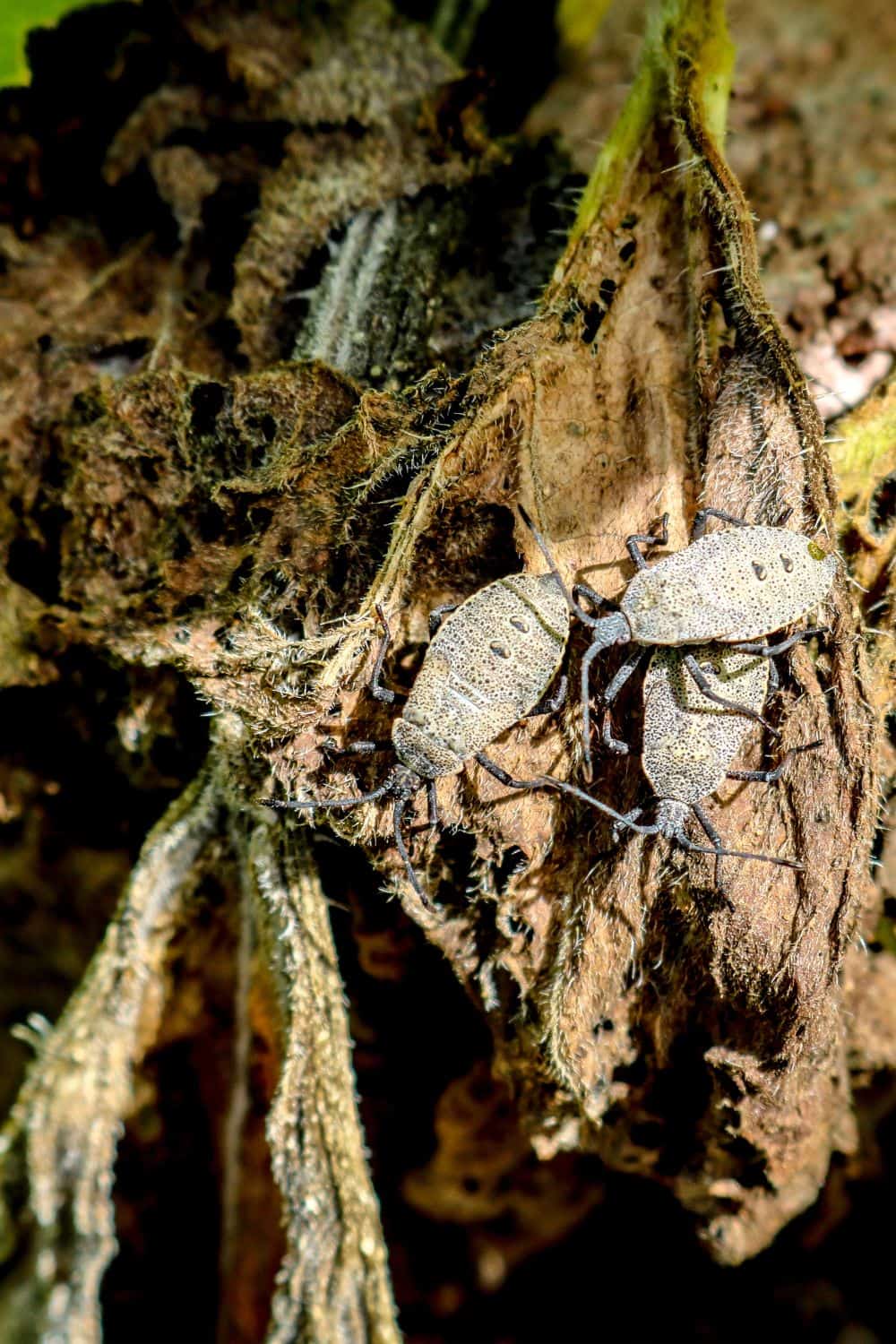
Squash bug lifecycle
Squash bugs will complete the life cycle in about 6-8 weeks. In northern climates, there is only one generation per year. In warmer climates, there may be two or three generations per year. Since they can overwinter in protected areas, such as under leaves, in debris, or in buildings. In the spring, they emerge and begin laying eggs. The eggs hatch into nymphs, which go through five stages before adulthood. Adults can live for several months and can reproduce throughout the entire summer.
Here are all the stages of the squash bug life cycle:
- Egg: The eggs are laid in clusters on the undersides of leaves. They are about 1/16 inch long and are reddish-brown in color. They hatch after about ten days.
- Nymph 1: The first nymph stage is called the crawler. It is about 1/16 inch long and is pale green in color. It has no wings, and its body is covered in white powder.
- Nymph 2: The second nymph stage is called the second instar. It is about 1/8 inch long and is greenish-brown in color. It still has no wings, and its body is covered in a white powder.
- Nymph 3: The third nymph stage is called the third instar. It is about 1/4 inch long and is grayish-brown in color. It has small wing pads, and its body is no longer covered in white powder.
- Adult: The adult squash bug is about 1/2 inch long and is dark brown or black in color. It has orange stripes on its abdomen, and it has fully developed wings.
Understanding the whole life cycle and stages of the squash bug can help us know how to handle them and when. Since the adults have a harder shelled body, they are harder to kill than the nymphs can be.

How to identify squash bugs
The different stages of a squash bug each has identifying factors, which can help us pay closer attention and detect the squash bug earlier in their life cycle. Thus, we can keep them in check so our plants can produce and be healthy before the squash bug takes over.
Here are the different stages and how to identify them clearly:
- Eggs:
- Squash bug eggs are about 1/16 inch long and are reddish-brown in color.
- They are usually laid in clusters on the undersides of leaves.
- The eggs are often found near the veins of the leaves.
- Nymph
- Squash bug nymphs go through five stages of development.
- The first nymph stage is called the crawler. It is about 1/16 inch long and is pale green in color.
- The nymphs have no wings, and their bodies are covered in white powder.
- As the nymphs mature, they become darker in color, and their bodies lose the white powder.
- Adult
- Adult squash bugs are about 1/2 inch long and are dark brown or black in color.
- They have orange stripes on their abdomens.
- Adults have fully developed wings and can fly.
Identifying these different stages has been critical to choosing which natural method for controlling squash bugs is necessary.
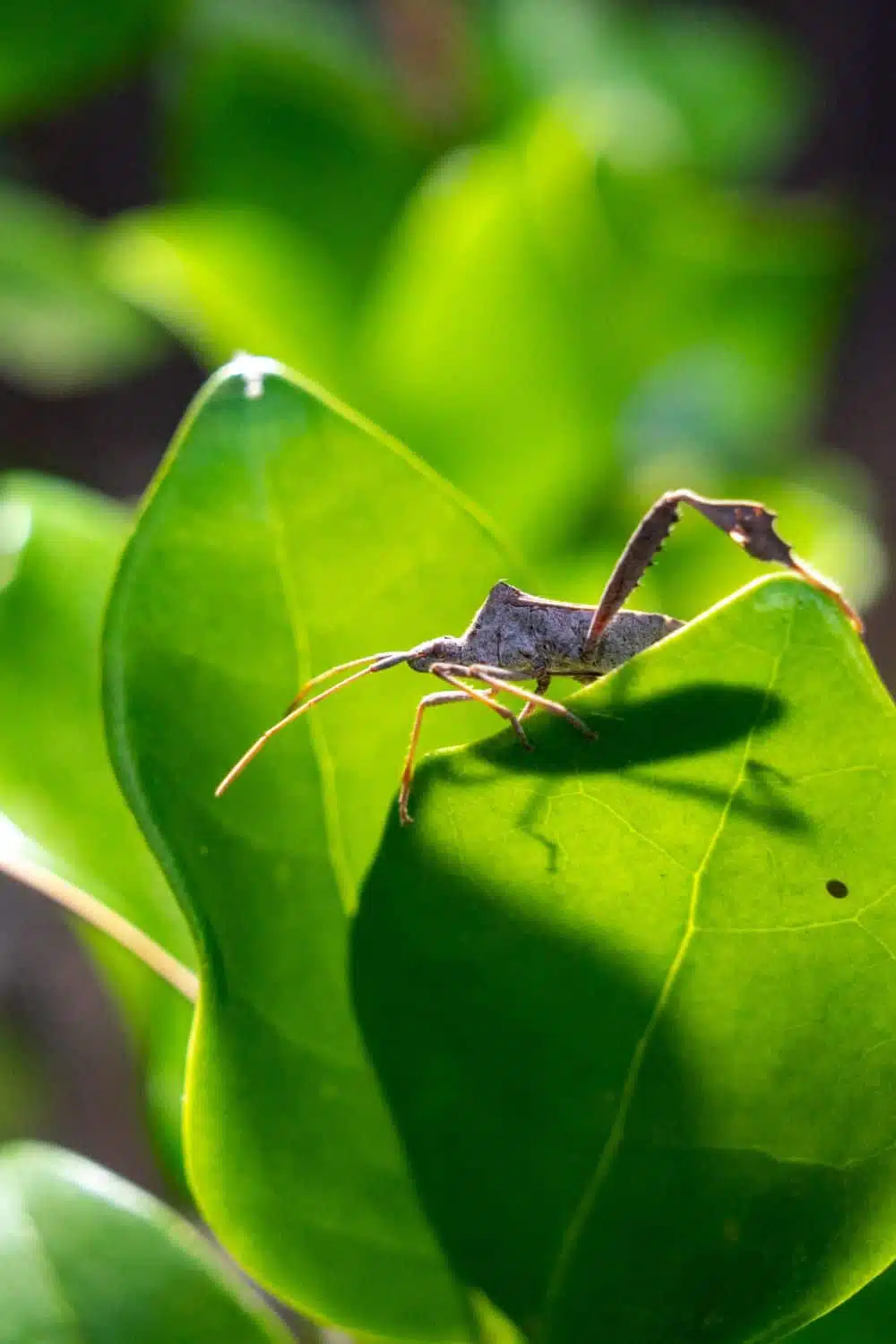
Identifying damage
Sometimes the sign that something is wrong means we may be too late for our plants. The damage is usually a sign our squash plant may be in serious distress. Even a healthy plant can not withstand the destruction of the squash bug. These bugs inject a toxin into the plant so they can suck the sap from the stems and leaves through their mouthparts, this damage can become evident through the following signs:
- Yellow spots on leaves that eventually turn brown
- The leaves are wilting even with proper nutrients and watering
- Leaves that dry up and turn black and crisp.
- Yellowing or struggling-looking stems on the plant
- Smaller plants will die and become blackened gray and crispy
The sign of squash bug damage is disheartening, but if you can remove the squash bugs quickly before it gets worse and then get rid of any struggling parts of the plants, you usually can recover the plant without issue, but it will take diligence on the part of the gardener.
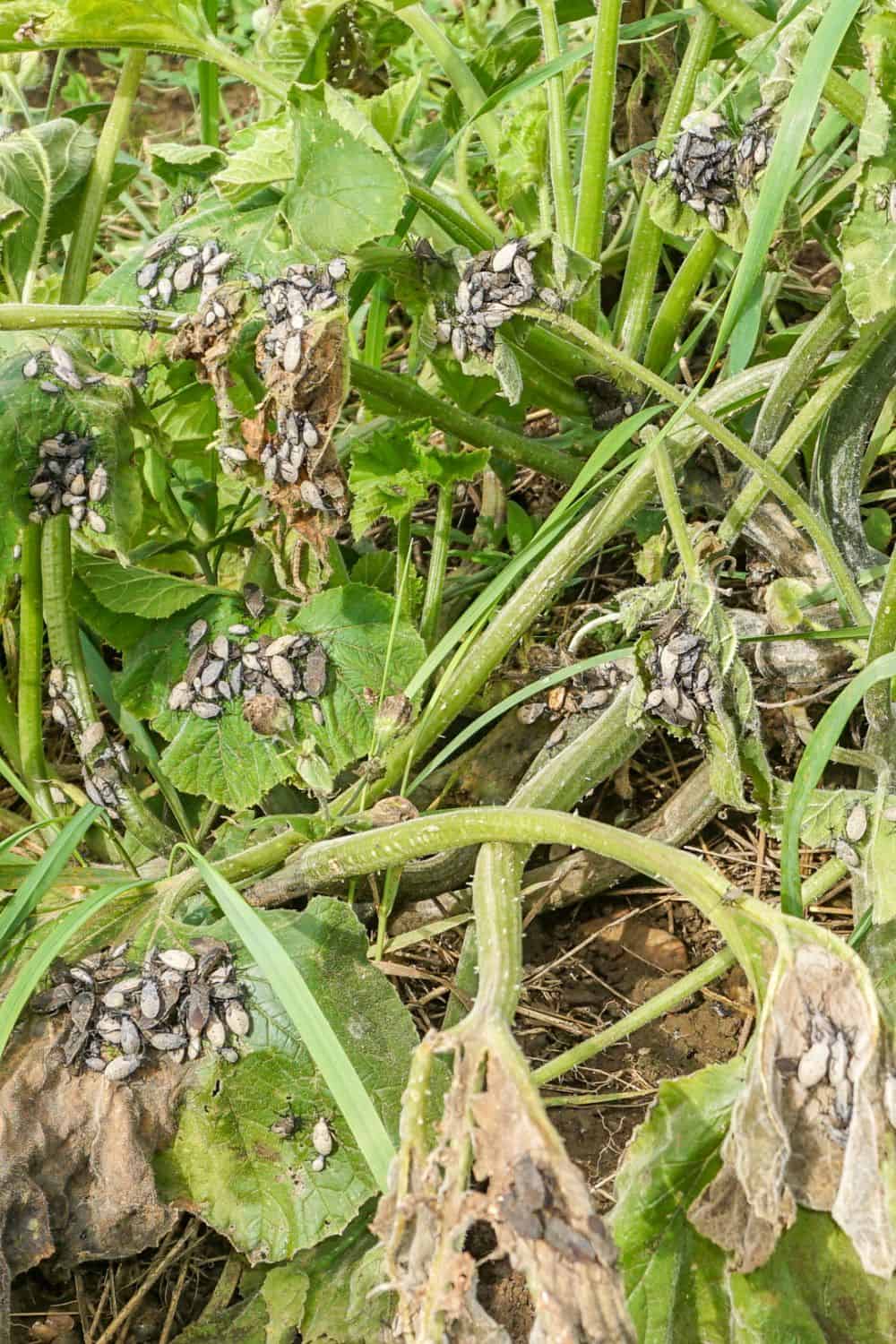
How to get rid of squash bugs naturally
To get rid of squash bugs naturally, you must use the following methods to keep them in check. The key is paying close attention to your squash plants early in their life in your garden. If you pay attention, you can usually offset the potential damage to the plant.
- Detect Them Early: Finding the bugs early on and paying attention will have the greatest impact. They usually appear within 2-3 weeks after planting a squash plant.
- Row Cover: Though squash plants need pollination to grow and develop fruit, you can do that by hand. If you have really bad squash bug issues, placing a row cover over your squash plants will help immensely to keep them off the leaves from the get-go.
- Hand-picking: This is the most effective way to eliminate squash bugs. By removing them by hand, you can dunk them into warm soapy water and drown them. This must be done almost every other day throughout the summer to keep their population low. I choose to use Bronner’s Peppermint Castille soap.
- Egg Removal: You can easily find the eggs under the squash plant’s leaves. When you find them, remove them by taking duck tape, wrapping it around your hand, and pulling them off. Place in the trash can for disposal.
- Succession Planting: Sometimes, we lose squash plants. This means many can be replanted and grown again directly from seed. Zucchini and summer squash, in general, can be reseeded a few times throughout the summer months.
These methods are the ones I have been using for years that have worked. I cannot recommend them enough to maintain low populations and healthy squash harvests in a naturally grown garden.
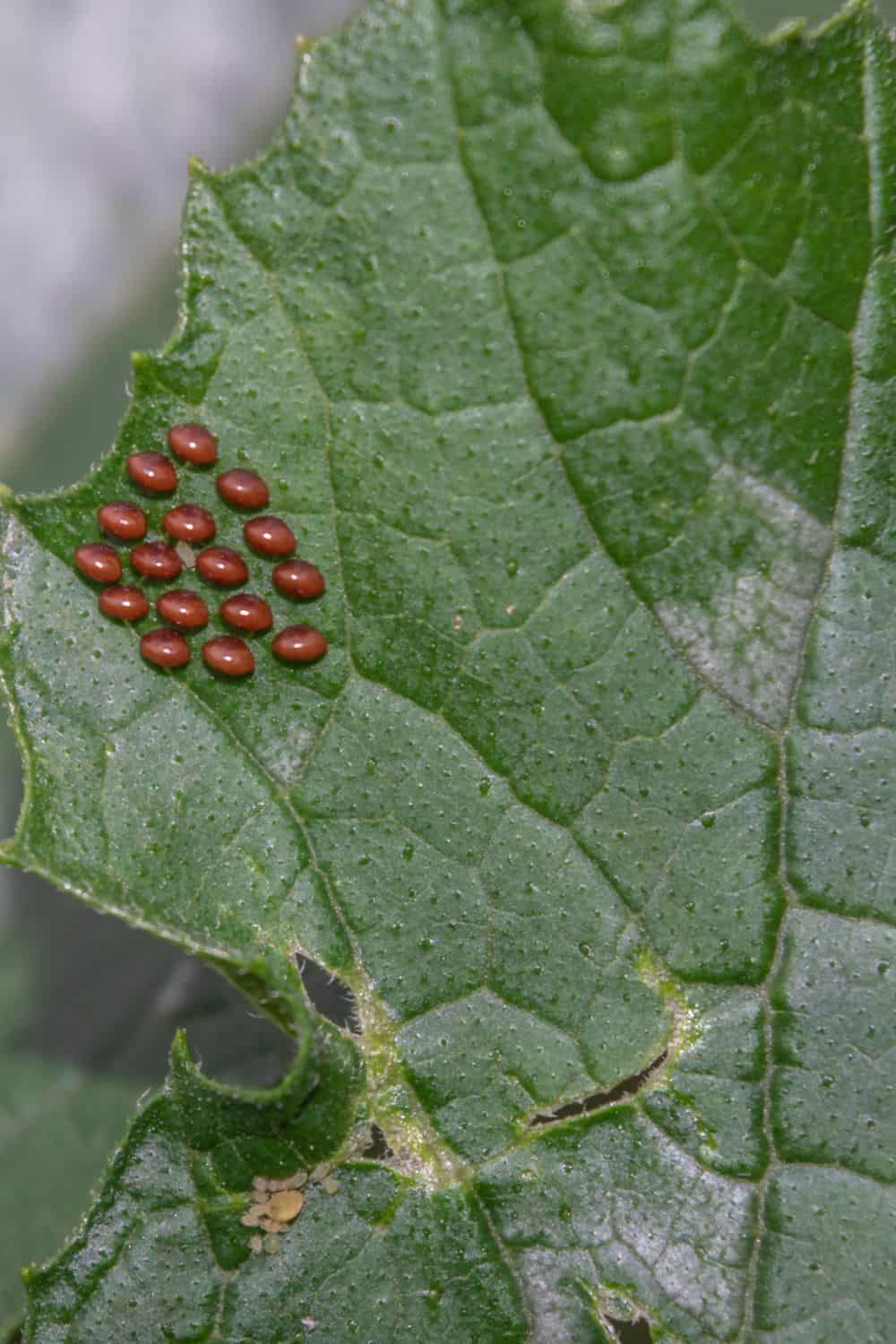
Using insecticides
Insecticides actually do not work against squash bugs. This is because squash bugs have actually built up a resistance to insecticides. The sprays typically only control the adults, not the nymphs or eggs. With the rate the squash bugs multiply, this may do very little while doing more harm to the environment and other beneficial bugs in your garden.
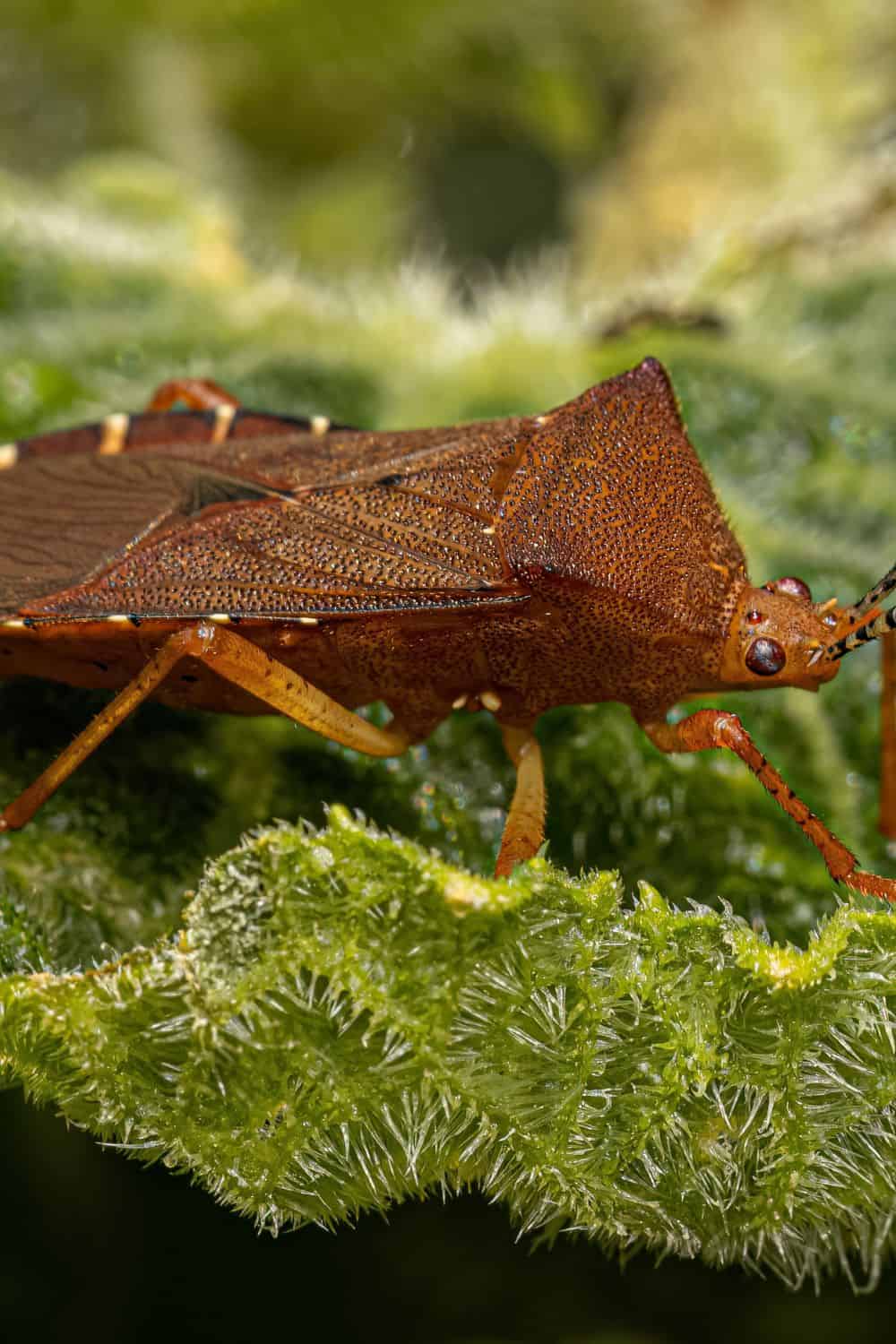
How to prevent squash bugs
- Rotating Crops: Not keeping squash in the same area yearly helps to keep the squash bugs away or deters them from taking over.
- Fall Cleanup: One of the best ways to keep squash bugs away is to ensure the adults don’t find a way to overwinter. DO NOT COMPOST vines; instead, I suggest burning them in a bonfire at the end of the season. You will increase populations of squash bugs by not cleaning up old vines and disposing of them through extreme heat. This is your best deterrent!
- Companion Planting: You can grow plants such as marigolds, catnip, nasturtium, garlic, chives, dill, tansy, beans, and sunflowers. All of these plants can aid in protecting and helping the health of your squashes. Some actually deter squash bugs altogether or trap them!
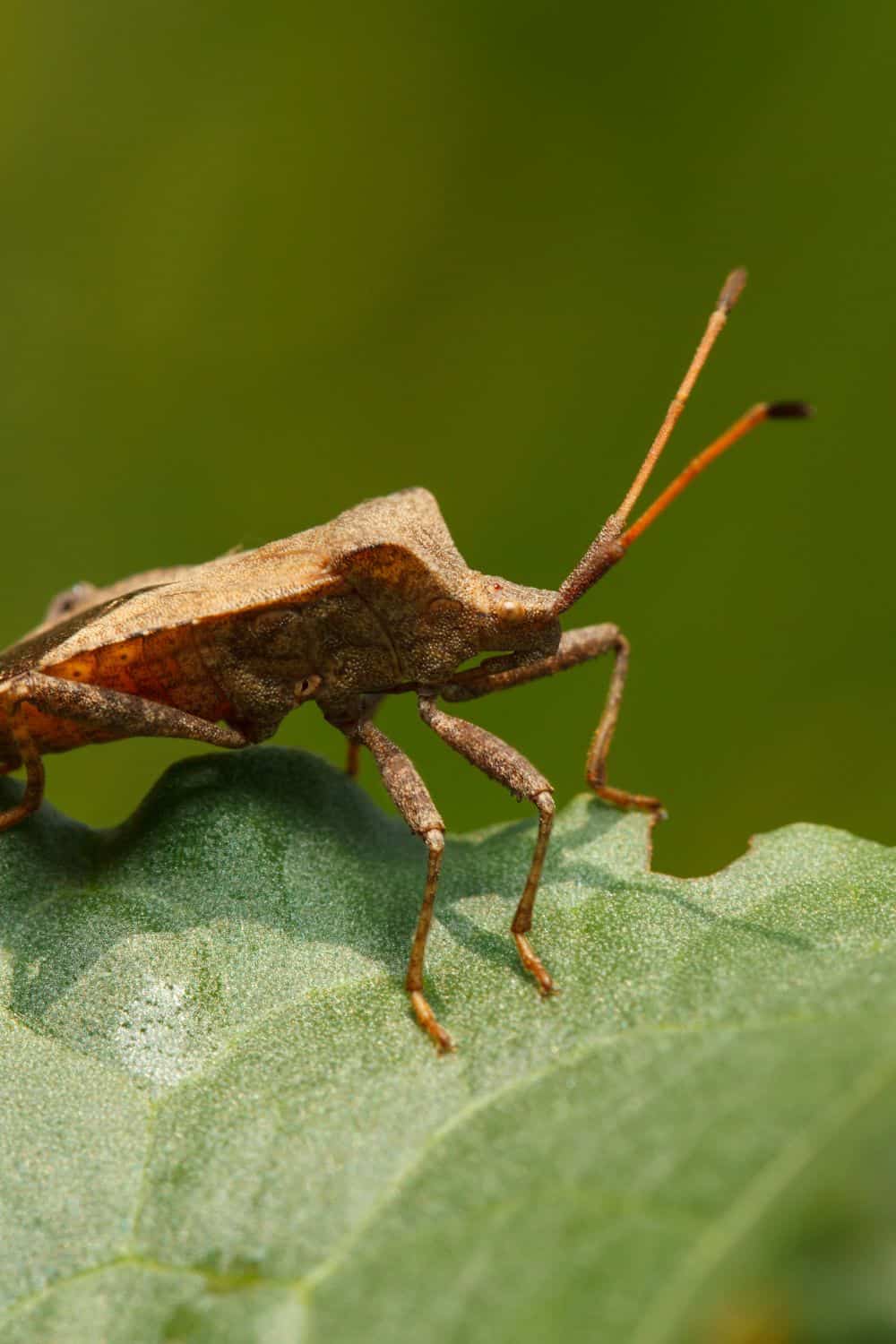
Squash bugs plague many home gardeners, but if you pay attention, you can actually keep their population low and easy to manage so you can have some very successful squash harvests this year! Naturally, handling squash bugs is the best way, not just for your and your garden’s health but because insecticides don’t affect squash bugs.
If you find this post helpful, you may also consider these posts:
- The BEST Way to Control Aphids
- How to Deter Cabbage Moths in Your Garden Naturally
- How to grow great sunflowers
- When to Plant Pumpkins for Halloween
- How to Grow Basil


